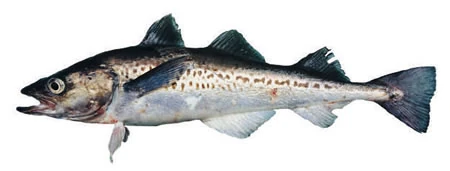
| |
| Scientific Name | Theragra chalcogramma |
|---|---|
| Conservation Status | Data Defficient |
| Family | Chordata |
| Habitat | North Pacific Rim |
| Food | Plankton |
Alaska pollock or walleye pollock (Theragra chalcogramma) is a North Pacific species of the cod family Gadidae. While related to the common Atlantic pollock species of the same family, the Alaska pollock is not a member of the same Pollachius genus.
The Alaska pollock has been said to be "the largest remaining source of palatable fish in the world". More than 3 million tons of Alaska pollock are caught each year in the North Pacific from Alaska to northern Japan. Alaska pollock catches from U.S. fisheries have been quite consistent at about 1.5 million tons a year.
It has been found that catches of Alaska pollock go up three years after stormy summers. The storms stir up nutrients, and this results in phytoplankton being plentiful for longer, which in turn allows more pollock hatchlings to survive.
Compared with pollock, Alaska pollock has a milder taste, whiter color and lower oil content.
High quality, single frozen whole Alaska pollock fillets may be layered into a block mold and deep frozen to produce fish blocks that are used throughout Europe and North America as the raw material for high quality breaded and battered fish products. Lower quality, double-frozen fillets or minced trim pieces may also be frozen in block forms and used as raw material for lower quality, low-cost breaded and battered fish sticks, portions, etc.
Alaska pollock is commonly used in the fast food industry, for example the Filet-O-Fish sandwich at McDonald's.